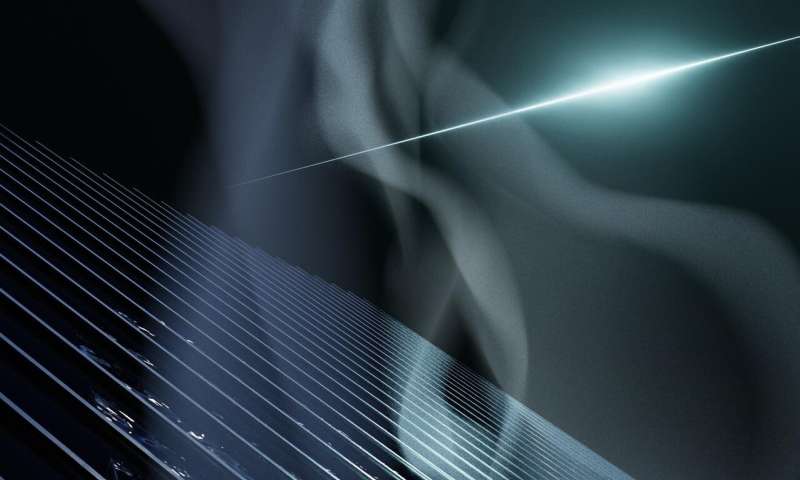New solar material could clean drinking water
Published on by Water Network Research, Official research team of The Water Network in Academic
With Army funding researchers at the University of Rochester have developed an aluminum panel that angled at the sun purifies water. Credit: Courtesy of University of Rochester
Providing clean water to soldiers in the field and citizens around the world is essential, and yet one of the world's greatest challenges. Now a new super-wicking and super-light-absorbing aluminum material developed with Army funding could change that.
With funding from the Army Research Office, an element of the U.S. Army Combat Capabilities Development Command's Army Research Laboratory, researchers at the University of Rochester have developed a new aluminum panel that more efficiently concentrates solar energy to evaporate and purify contaminated water.
"The Army and its warfighters run on water, so there is particular interest in basic materials research that could lead to advanced technologies for generating drinking water," said Dr. Evan Runnerstrom, program manager at ARO. "The combined super-wicking and light-absorbing properties of these aluminum surfaces may enable passive or low-power water purification to better sustain the warfighter in the field."
The researchers developed a laser processing technology that turns regular aluminum pitch black, making it highly absorptive, as well as super-wicking (it wicks water uphill against gravity). They then applied this super absorptive and super-wicking aluminum for this solar water purification.
The technology featured in Nature Sustainability , uses a burst of femtosecond (ultrashort) laser pulses to etch the surface of a normal sheet of aluminum. When the aluminum panel is dipped in water at an angle facing the sun, it draws a thin film of water upwards over the metal's surface. At the same time, the blackened surface retains nearly 100-percent of the energy it absorbs from the sun to quickly heat the water. Finally, the wicking surface structures change the inter-molecular bonds of the water, increasing the efficiency of the evaporation process even further.
"These three things together enable the technology to operate better than an ideal device at 100 percent efficiency," said Professor Chunlei Guo, professor of optics at University of Rochester. "This is a simple, durable, inexpensive way to address the global water crisis, especially in developing nations."
Experiments by the lab show that the method reduces the presence of all common contaminants, such as detergent, dyes, urine, heavy metals and glycerin, to safe levels for drinking.

The researchers developed a laser processing technology that turns regular aluminum pitch black, making it highly absorptive, as well as super-wicking. They then applied this super absorptive and super-wicking aluminum for solar water purification. Credit: Courtesy of University of Rochester
The technology could also be useful in developed countries for relieving water shortages in drought-stricken areas, and for water desalinization projects, Guo said.
Taxonomy
- Purification
- Solar Water Disinfection
- Water Purification
- Solar/PV
- Solar Pasteurization
1 Comment
-
Interested in trying this in Nigeria with my Collaboration Team at the University of Benin City, Edo State, NIGERIA
